Un-naming the Gaps
“It is from the space between languages that images emerge. Each sentence is a way of looking at things, crafted by its speakers in a very particular way. Each language sees the world differently, inventing its entire vocabulary from its own perspective and weaving it into the web of its grammar in its own way. Each language has different eyes sitting inside its words.”
Herta Müller
Chicago-based artist Caroline Kent explores the limits of language, the process of translation, and the joys of wandering “in the dark” in her otherworldly abstractions. Kent’s practice embraces uncertain and cosmic spaces; the dark, expansive grounds of her paintings become sites for ideas waiting to land, converge, and transform. Through her experiences watching subtitled films, researching Cyrillic text and Russian Constructivism, and navigating unfamiliar languages while living in Eastern Europe, the artist discovered how the process of conflating images, icons, and translated words can shift paradigms and open up new worlds. In Disappearance of the word, Appearance of the world, Kent invents a painting language that serves as a threshold to an alternate reality or future–one that we can all navigate and translate together.
The artist’s fascination with the relationship between language and image began in her early years. Growing up in rural Illinois, subtitled foreign films became a way for Kent to explore culture outside of her immediate surroundings. However, the experience of watching these films--simultaneously reading, listening to unfamiliar sounds, and looking at images--led her to become interested in the process of translation: how different groups of people communicate culture, and how we grapple with the limitations of words. Taking notice of typos in subtitles, awkward phrasing, and moments when the on-screen image seemed to conflict with translated dialogue below, Kent began to see great possibility in the gaps between cognition and recognition. When language fails us, we turn to image.
Years later while living abroad in Romania, the artist’s experience of grappling with language and form introduced by film became tangible and immersive as she navigated an unfamiliar vocabulary and cultural environment. Not knowing the meaning of many Romanian terms, Kent began to take notice of other aspects of language, becoming more highly-attuned to how the sounds of Romanian dialect seemed to reflect, or be reflected, in the region’s architecture and design.
The artist encountered similar observations in the writings of Nobel-prize winning novelist Herta Müller, a native German speaker who was born in Romania and continued to live there through much of the Cold War. Müller writes of the transformative role that images play in the space between languages, and how important that space is for perceiving and understanding our environs. The Romanian word for a swallow is rindunica, translated literally as “sitting in a row.” The translation evokes the way swallows perch together on a wire, in a neat line; even the syllables of the word (rin-du-ni-ca) mirror the birds’ behavior. “I used to see them in my village every summer, before I knew the Romanian word. I was amazed that a swallow could have such a lovely name. I became more and more aware that the Romanian language had words that were more sensuous, more in tune with my perception, than my mother tongue. I would not now want to live without this string of transformations, in speech or in writing. There is not a single Romanian sentence in any of my books. But Romanian is always with me when I write because it has grown into my way of seeing the world.”
How often, if ever, do we notice these relationships in our native languages? Comparing the artist’s real-world grapple with Romanian back to our own experience of watching a foreign film: does that nagging feeling that we are always missing something, whether the accurate meaning of a word, a cultural cue or history, conversely mean that when we watch films in our own language, we understand fully and clearly? Or, is it simply that we understand familiarly?
If the failures of written and spoken language create gaps in which we turn our trust to images, what might it mean to develop a language that is strictly visual? Though turned on to translation by cinema, speech, and text, the artist shifts to painting as a space to work out her ideas about meaning and the processes of language; after all, isn’t it in the passage from one language or form to another that we can see the boundaries and limitations of each? Kent’s current practice centers around inventing a language in painting, positioning herself and her viewers at a threshold between the known and unknown. In many ways, paintings are sites that prioritize the activities of forming and transforming over naming and identifying. As such, painting--really good painting--is always built in some way around the nameless, the grasp-less, the about-to-become, the “not yet.” Painting, too, is a grapple.
Before the advent of photography, Western European painting was thought of as a window through which the outside world was mirrored or represented; contemporary painting is still affected by this legacy. Caroline Kent enthusiastically chooses to explore painting’s inside world. In the spirit of side-stepping a process where resemblance identifies meaning, the artist works by organizing compositions “in the dark”--literally within grounds that are painted black, and figuratively without a predetermined or representational agenda. In this manner, she organizes a series of shapes and pithy marks that seem to emerge from this dark expanse and converge into cosmic abstractions. The abstract quality of her compositions is very important for establishing access to these works. Though influenced by elements as disparate as Eastern European architecture, science fiction, Cyrillic film posters, and religious iconography, the artist’s painted forms deliberately detach from their influences to create a level entry point for all audiences, outside of literal translations or objective comparisons. These compositions support a flexible semantic space as opposed to a knowable language.
Studying Eastern Orthodox religious iconography, Kent noticed that figures featured are purposely flattened as a gesture to separate them from us and place them in an alternate, divine reality. In this case, icons serve as image-based mediators between language and an otherness beyond the limits of direct description. These figures shift from being representations of individuals to an embodiments of the spiritual. Kent’s paintings are sites driving lines of inquiry about how we make meaning, as well as thresholds to alternate states that exist between or outside of our language-influenced imaginations. We create words, symbols, and grammatical constructions to systematize and make sense of the things we already recognize in the world around us--to fix rather than transport ourselves. What happens instead when the invention of a system comes first, before or entirely independent of recognition? What in that case, do we learn about how context shapes language? How--to borrow once more from Herta Müller--can we train those “eyes sitting inside” words to see the things they don’t know or can’t yet explain?
Essay by Amanda Smith, Exhibitions + Fellowship Manager
Müller, Herta. “The Space between Languages.” Asymptote Journal.
https://www.asymptotejournal.com/nonfiction/herta-muller-the-space-between-languages/
Photos by Dana Damewood
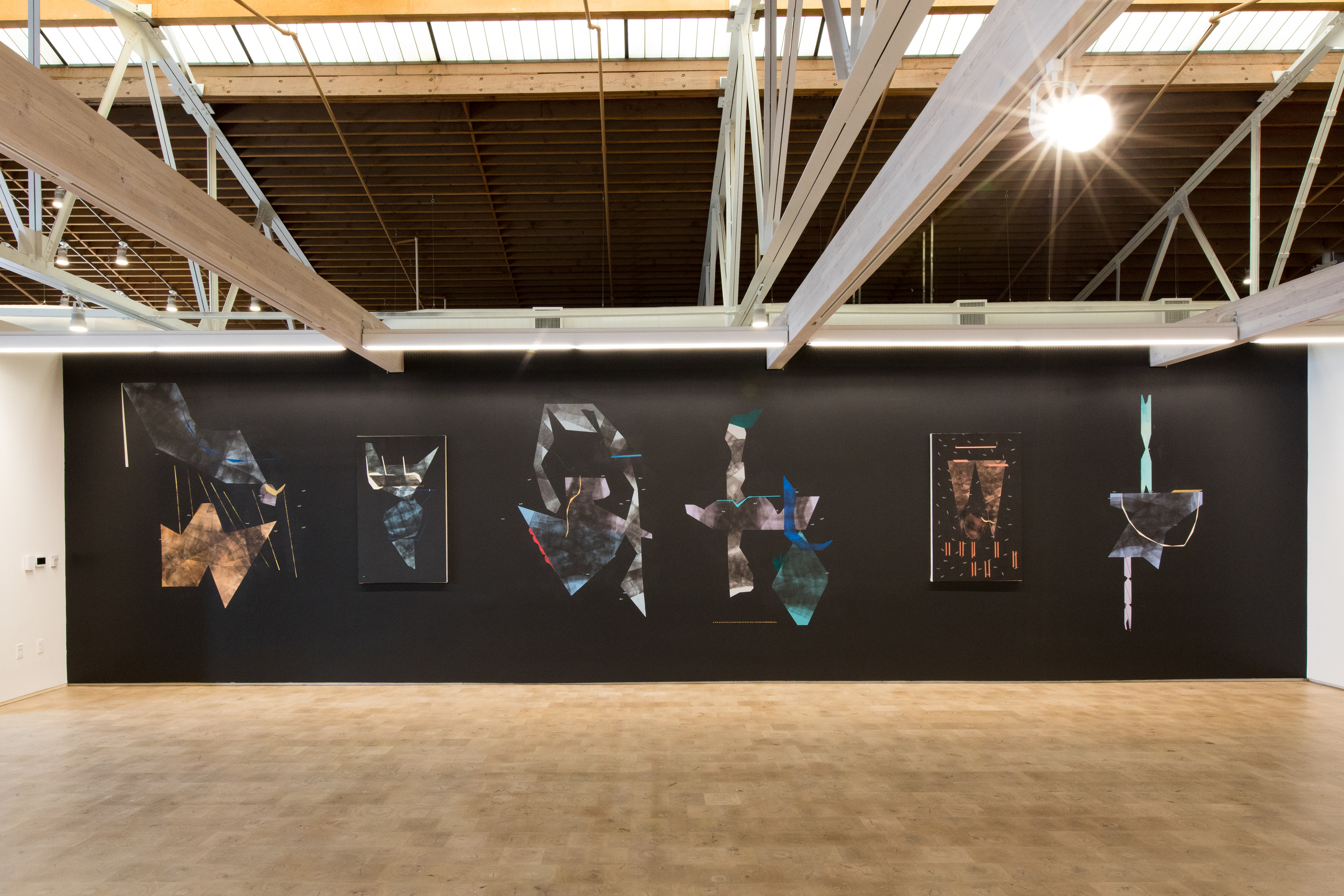
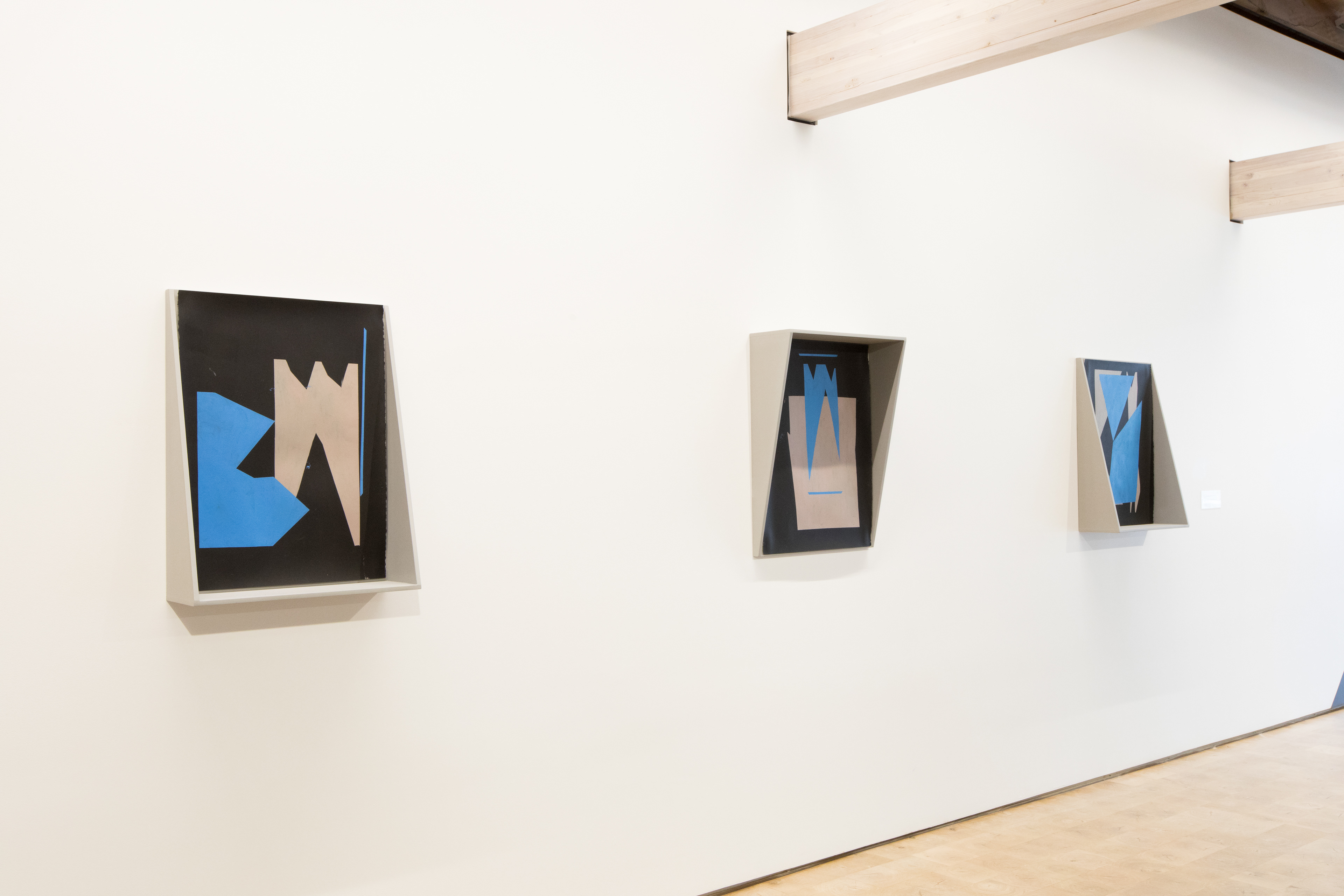



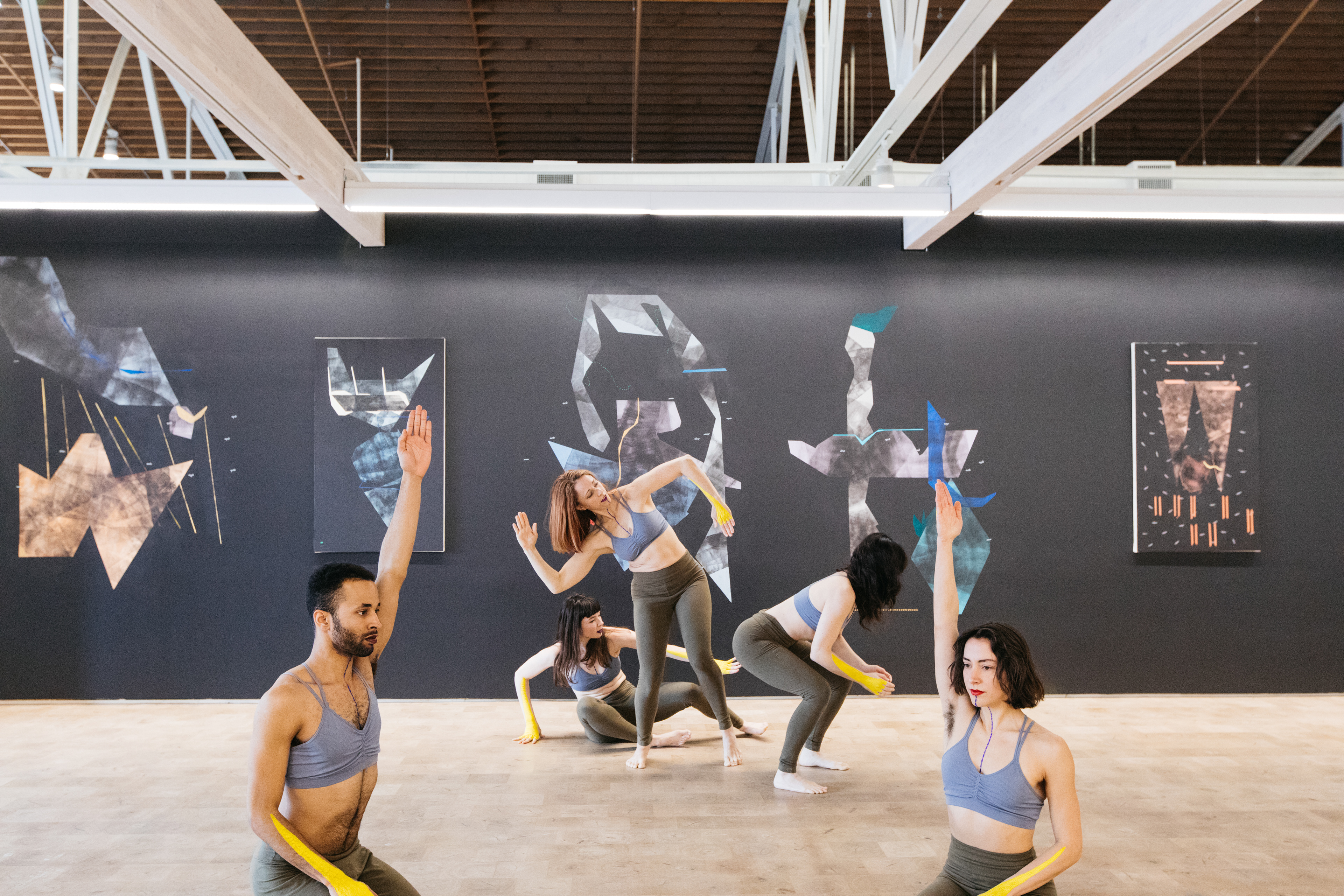
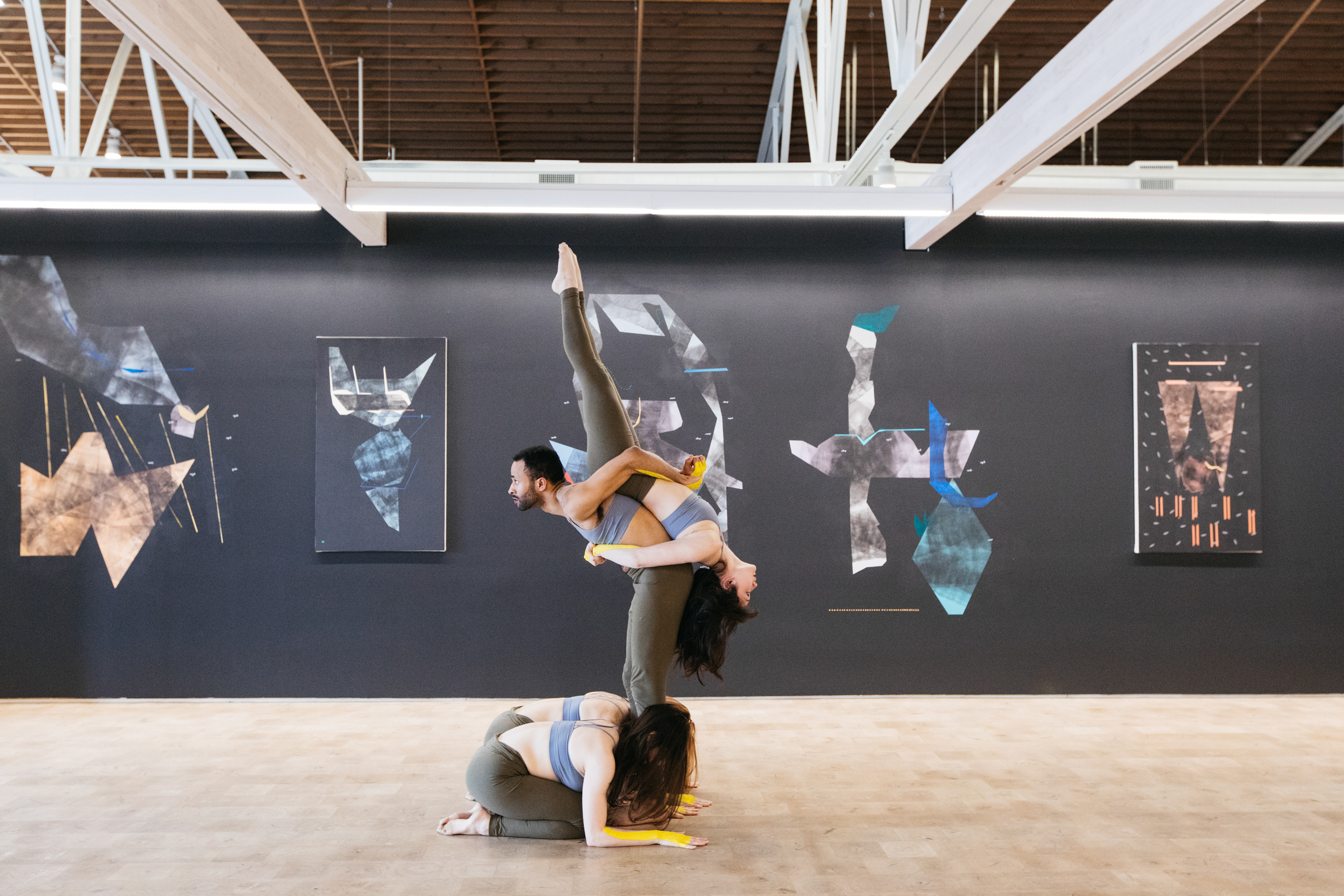

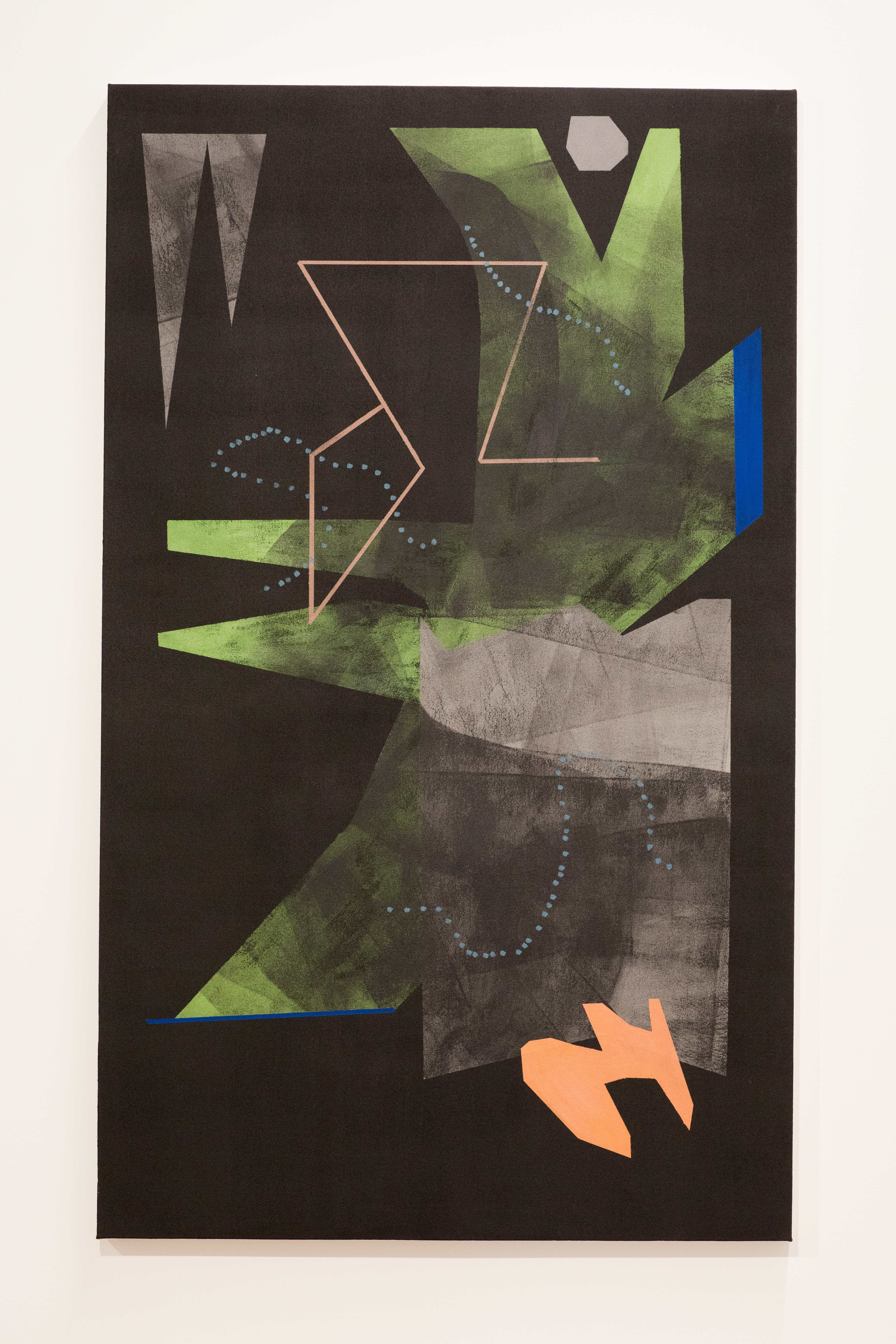
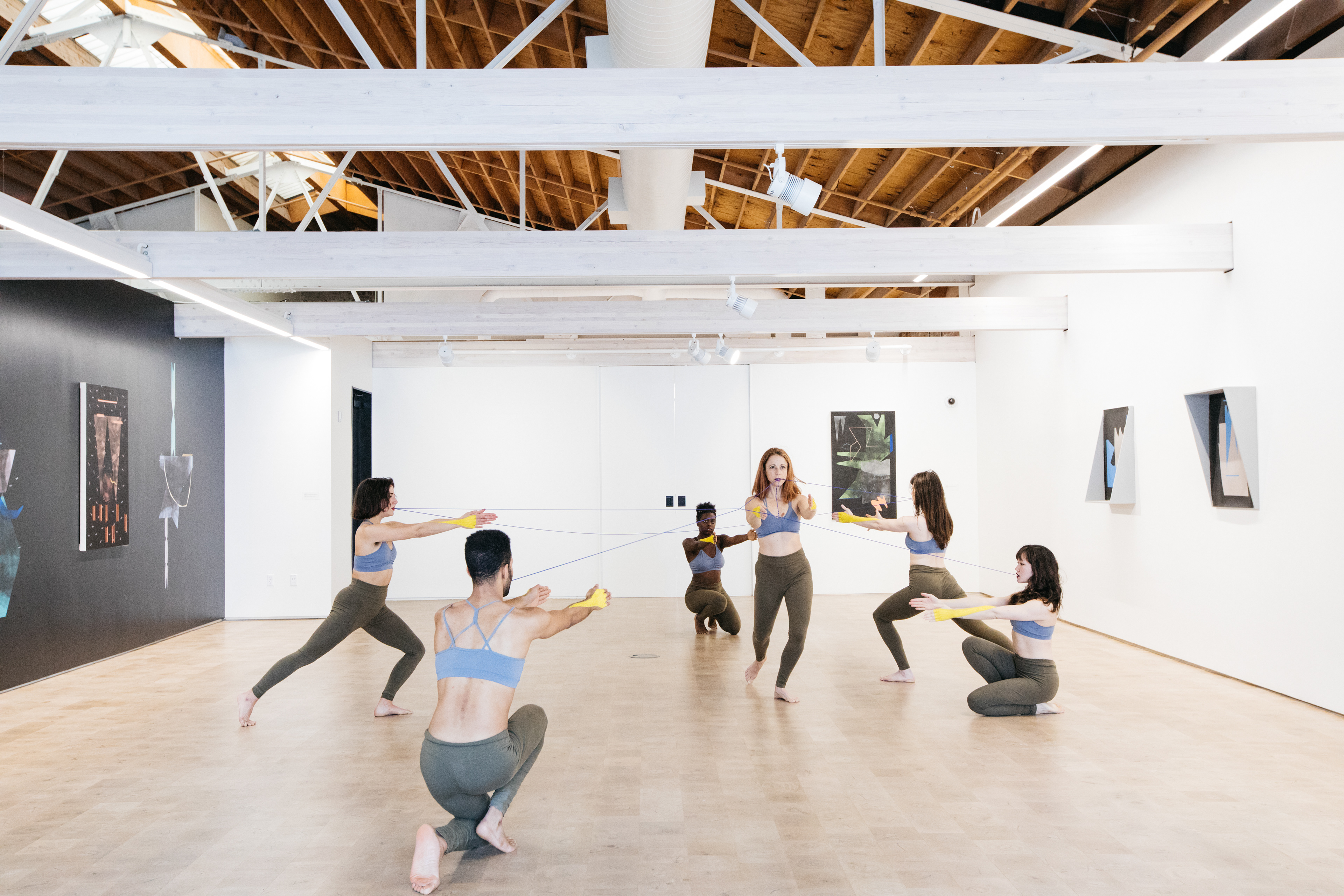


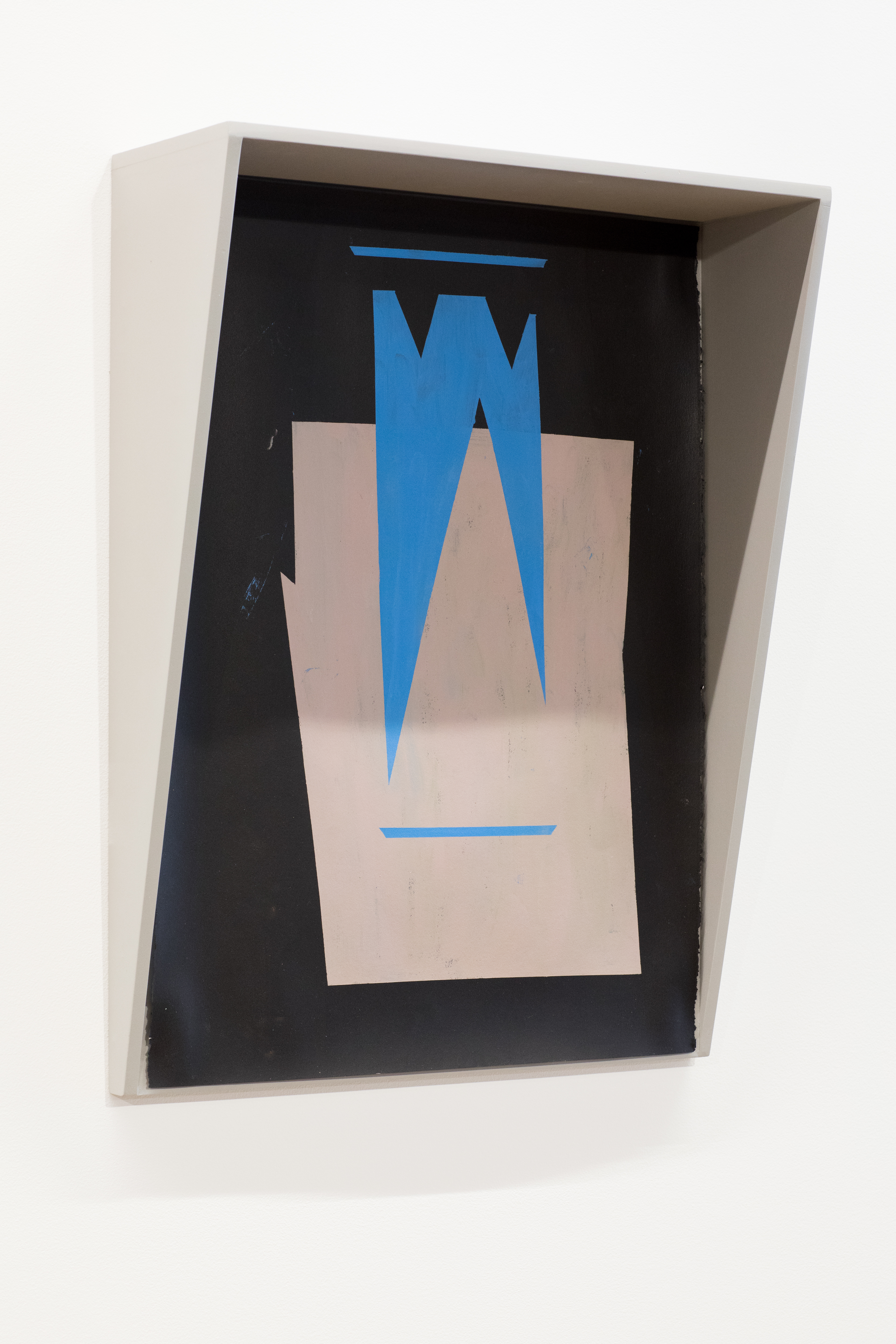
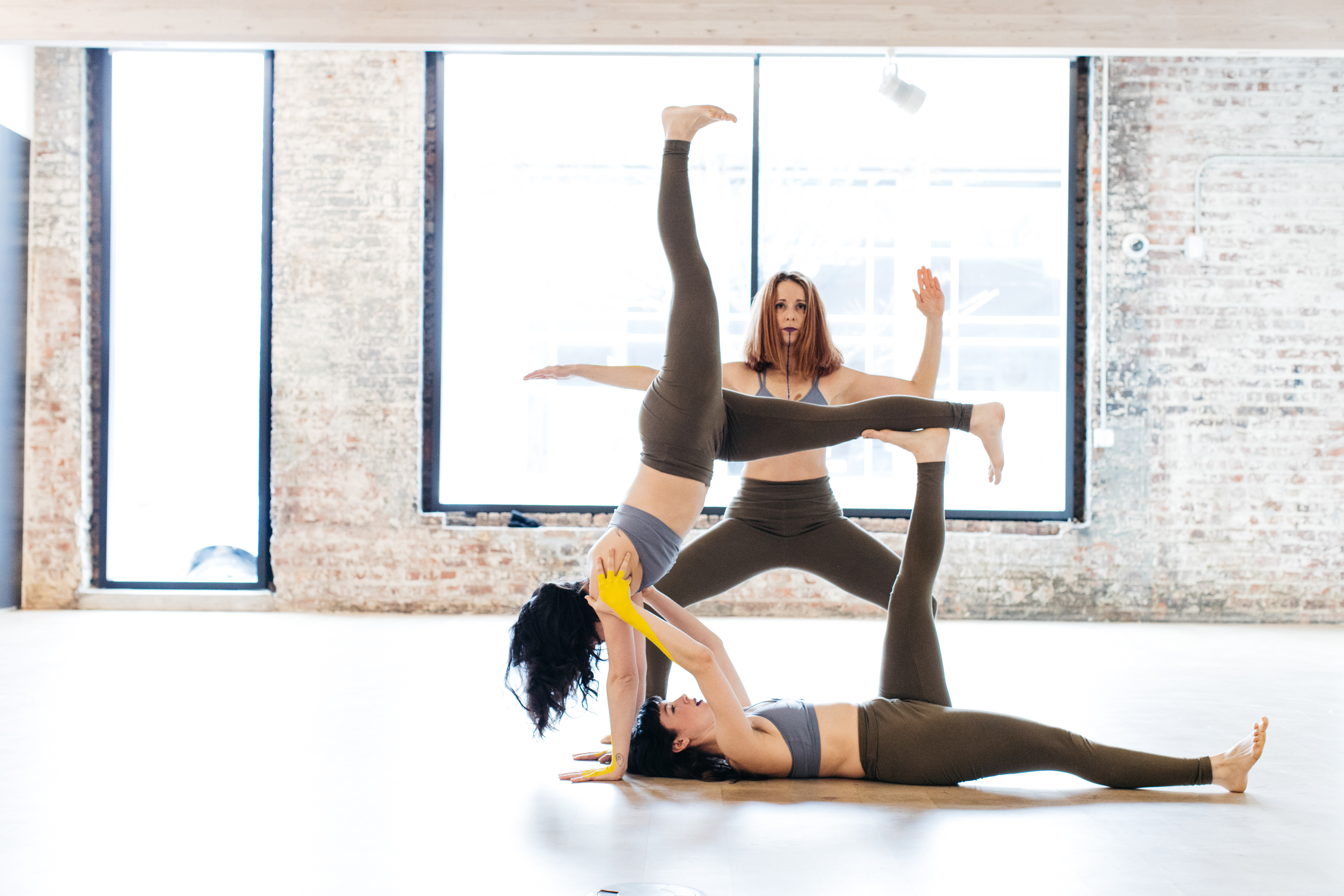
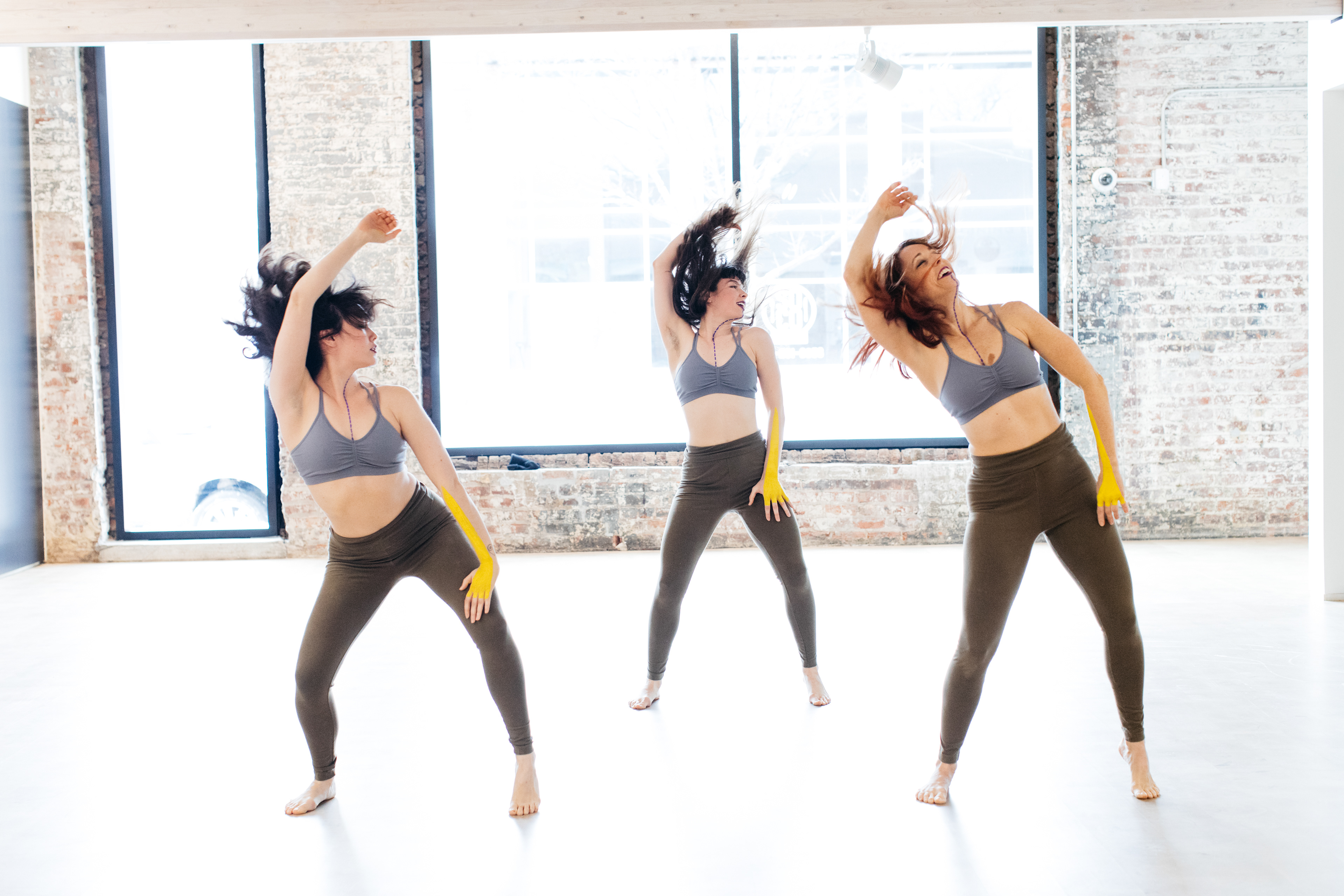
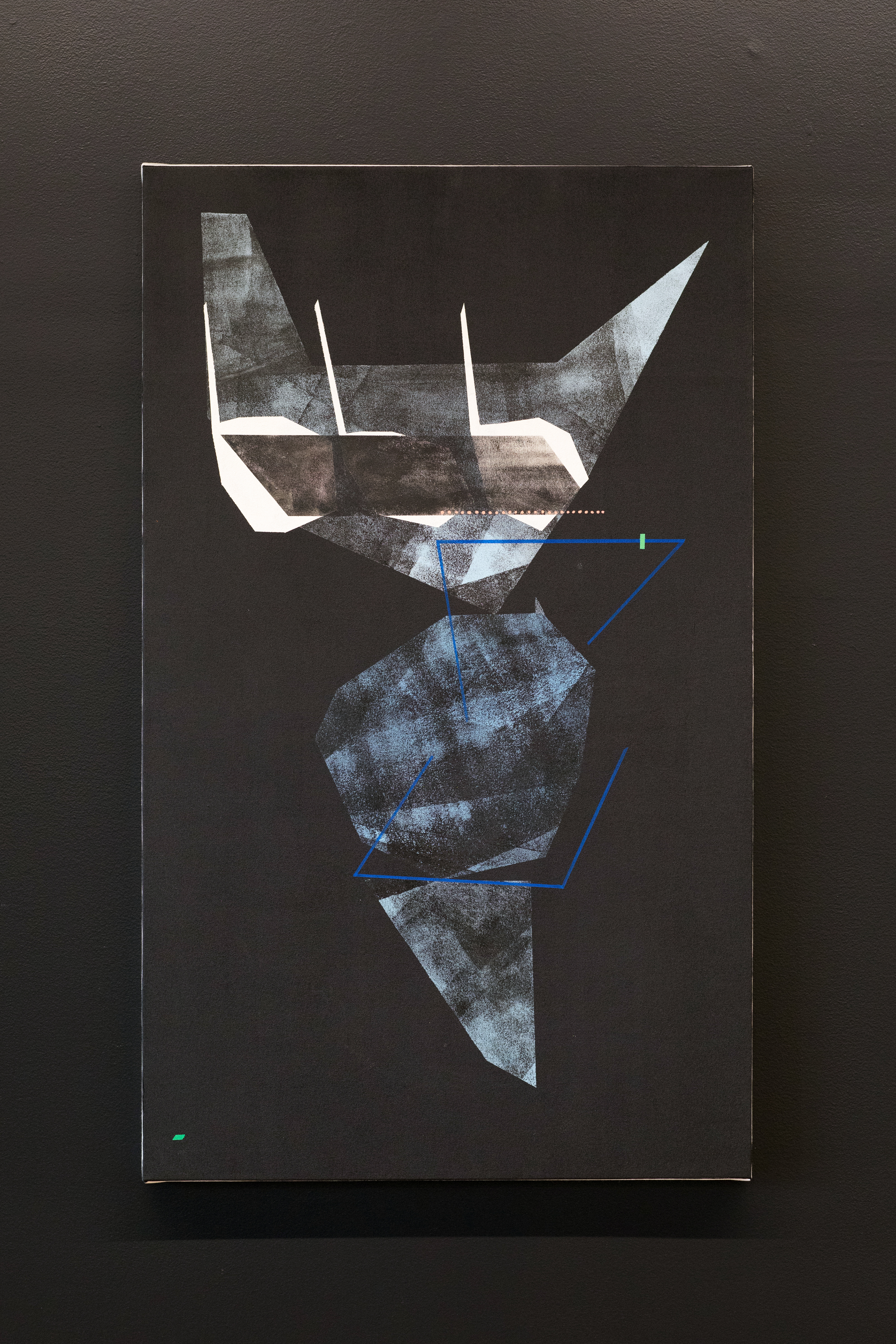
MOVEMENT PERFORMANCE: language for the living
In conversation with the exhibition, language for the living explores the possibilities for communication within movement + dance. Using their bodies as the medium, performers will seek to to create a visual language through gesture, shape, pattern, and form in an attempt to transmit information and ideas beyond words. Drawing inspiration from the shapes and structures found within Caroline Kent’s work, this performance lives somewhere between realms, in the spaces within our minds where linear, verbal communication is no longer necessary.
ABOUT THE ARTIST
Since receiving her MFA in 2008 from the University of Minnesota, Caroline Kent has participated in numerous exhibitions including the California African American Museum, Los Angeles; The Suburban, Chicago; Washington Park Arts Center, Chicago; Elephant, Los Angeles; and SUNY Duchess in Poughkeepsie, NY. In 2012-13 she was a Creative City Making Minneapolis grant recipient. Kent has twice received the Minnesota Artist Initiative Grant, and is recipient of a Pollock-Krasner Foundation Grant, a Jerome Fellowship, and a McKnight Artist Fellowship, and is currently a Fellow at Shandaken Project’s Paint School. Kent is included in the forthcoming cross-institutional exhibition Out of Easy Reach, hosted by the DePaul Art Museum, highlighting contemporary and conceptual expansion of abstraction by female-identifying artists from the Black and Latina Diasporas.
ABOUT THE CHOREOGRAPHER OF language for the living
In conversation with Caroline’s work, Kat Fackler has choreographed language for the living, which explores the possibilities for communication within movement and dance. Fackler is an Omaha-based choreographer, performer, founding member + co-director of tbd. dance collective. She choreographs and produces movement-based productions and projects throughout the community in collaboration with various organizations and independent artists. Projects have included ESP a music video for The Faint, One Day, One Month, One Year, a short film for KANEKO’s 2016 Summer Programming, and the finale for Omaha Performing Arts Nebraska in Motion in Fall 2017.
ABOUT THE DANCERS FOR language for the living
Performers for this movement project, language for the living, include Dawaune Hayes and Alajia McKizia and tbd. dance collective members Kat Fackler, Stephanie Huettner, Alyssa Rivera, and Annie Schenzel. tbd. is an Omaha based modern and contemporary dance collective founded in 2014 by a group of artists and dancers who wanted to create and perform movement together. With a creative process built around exploration and collaboration, they produce multidisciplinary movement based performances that seek to challenge perceptions of dance as an art form. tbd.'s mission is to foster collaborations with cross-genre artists, to encourage critical dialogue about choreography and performance, and continue the growth and support of modern and contemporary dance in Omaha.
